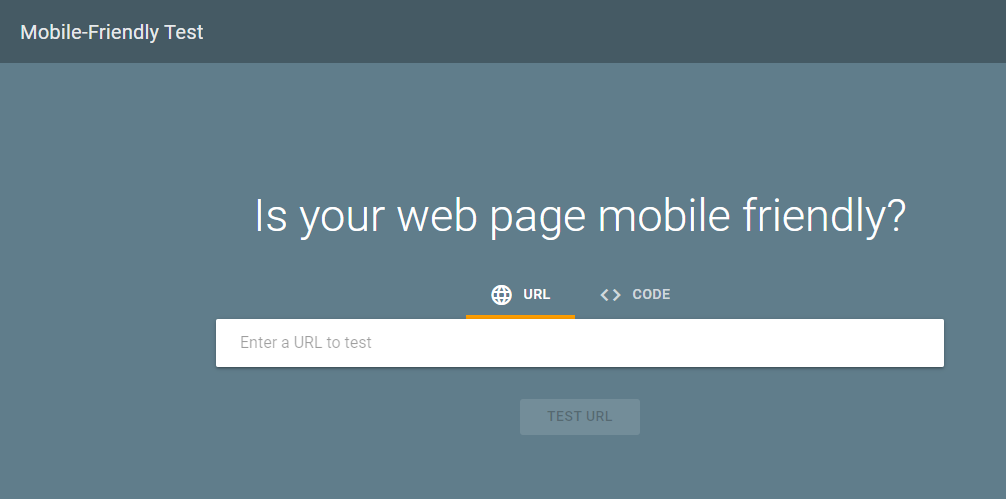Why Your Online Shop Needs Product Reviews
Product reviews can have a big impact on your online shop. Whether it's conversions, building trust, or SEO, learn why your shop needs product reviews.

SEO mistakes are definitely something you want to avoid, but it is practically impossible. The science behind SEO is constantly changing, so there will always be something to update or optimise. In this article, guest author, Eva Wagner, from the Online Marketing Team at Ryte, shares some valuable tips for the perfect foundation of a solid website, based on five easily avoidable SEO mistakes.
Search engine optimisation (SEO) is one of the most important disciplines in online marketing. When implemented correctly, it as close to a guarantee for free organic traffic as it gets. Getting it right is important though, so you have to pay attention to some important aspects in the optimisation process.
Meta tags continue to play an important role in the search engine optimisation of a website and should therefore not be neglected. They enable you to communicate information to users via your own website and to describe it in more detail.
The easiest element to optimise in a website is probably the title tag or, in other words, the title of the page. This is one of the first things seen by a user when checking the results of a search inquiry.
The title tag appears in the header of the HTML document as follows:
<meta name="title" content="The #1 Platform for Website User Experience - Ryte">
The optimisation of the title tag is also known in SEO circles as "low-hanging fruit" because this measure offers high potential although little effort is required for its implementation.

Figure 1: Example of a relevant title for Ryte's snippet in the search results
How to optimise your title:
Create texts that are as click-generating as possible, preferably with a call-to-action (e.g. “Start now for free!”) if it makes sense. The title tag should reflect the content of the target site. If possible, also add your main keyword in the title.
The title tag should not, however, contain more than 60 characters. If it is longer, it may automatically be shortened by Google.
The second most important element which a user notices in a snippet is the description tag. This allows you to give an accurate description of the webpage’s content and can also be equipped with a "call-to-action", which significantly increases the click rate in search results.
If no meta description is entered, excerpts from other available text content will be displayed instead. However, website administrators should use a customised description here in order to give users the most accurate description of the page's content as possible.
The description tag, among other things, can influence the click-through rate, or traffic, if the description is informatively and attractively formulated. With this tag, you can arouse the user’s curiosity when they browse the search results.
Such user signals can be taken into account as important factors in the evaluation of websites by search engines (i.e. Google's algorithm). It is therefore important that your search snippet is as relevant as possible. You should definitely have your most important keyword(s) here, too.
Informative and high quality content (e.g. texts, images or videos) is very important to increase the average time on site and improve the number of returning visitors to your website. If your visitors are not convinced by your website’s content, it is very unlikely that they will return.
For search engines, qualitative content is an important criterion for the correct assessment of a website’s relevance. If a website only has "thin" content (e.g. little text, too many advertising banners, large link blocks), this could very well lead to a poorer ranking.
The Google search machine repeatedly confirms this fact in its guidelines. Google considers that thin content does not fulfil the requirements of the webmaster guidelines and does not offer the visitor added content value.
Another element to avoid is duplicate content, which occurs when exactly the same content is accessible via different URLs. This is even the case when your website is accessible both with and without "www".
Duplicate content may cause confusion not only for users, but also for search engines because they cannot recognise which of your URLs is most relevant, thus causing the unnecessary use of their resources.
In order for a website's content to be found by users, it must be comprehensively recognised and indexed by Googlebot. For this reason, all resources should be accessible to Googlebot.
How to optimise your content:
Consider which questions and search intentions users who visit your site have, and try to optimally answer them in your content.
Plan in advance an optimal page hierarchy in order to avoid duplicate content. By doing so, you can identify possible sources of duplicate content more easily.
Take the time to create your own unique content with added value for your users, thus making your website something special. Your visitors will more likely return to your website if they receive helpful results to their search queries.
Recommended reading:
Creating a blog to help your business grow
Your website should include both text and images, and these should not be forgotten during optimisation. Optimised images will not only generally increase the usability of your website and thus positively influence the user experience on your pages, they also contribute towards better rankings in search engines.
Some of the most common mistakes concerning image optimisation are forgetting to adapt the file sizes or failing to distinguish the image files with appropriate meta data.

Shutterstock/GaudiLabs
How to optimise your images:
Give your image files descriptive names which, whenever possible, contain the key search term but no special characters, vowel mutations or numbers (This also applies in principle for all file names.) In this way, you fulfil the prerequisite for good ranking in the image search.
In order to avoid long loading times, you should compress the file size of your images - a slow loading speed can lead to dissatisfied users who quickly leave your site. We can recommend TinyPNG for optimising image sizes.
Use so-called ALT attributes for the integration of images. These help search engines in the interpretation of your image files and are shown when the browser is not able to load or display your images. ALT attributes assist in web accessibility and can help visually impaired users recognise image content with the aid of reading programs.
The integration of high-quality and informative images helps to make your website content more attractive and diverse. With high-quality content on your site, you increase the average time on site of your visitors and simultaneously lower the risk of a high bounce rate.
Bonus tip: Use original images whenever possible. Google loves original content.
It's crazy to think that in this day and age, it still needs to be said: Website operators cannot afford to ignore mobile optimisation. Market researchers predict that mobile usage will simply continue to increase, especially when it comes to e-commerce.
Website administrators should therefore actively look at how they can optimise their websites for mobile usage. There are various possible approaches:
Responsive web design (RWD): With RWD, website pages are adapted to the size of the screen and/or device in order to ensure user-friendliness. For this, the same content is made available in a slightly adjusted design for various devices.
Dynamic serving: With dynamic serving, different source code variations (HTML and CSS) are supplied for the various user agents, such as desktop PCs or mobile devices. For this, only one URL is necessary.
Mobile-optimised subdomain: Here, a separate URL for the mobile-optimised site is created. A second version of the website exists, designed specifically for mobile content.
Tips for mobile optimisation:
Always integrate text and images with relative size information. This way, text and images will always be adapted to the display of the respective output device and will be easily visible and legible (for text, Google recommends 16 pixels as a basis).
Be sure to give your mobile users sufficient space between the individual tap targets so that they can also be easily used on devices with touchscreens. In other words, don't make your buttons too close together.
Make sure that the mobile user of your website does not have to scroll horizontally and do not use tricky hover menus for navigation.
Compress your files (e.g. JavaScript or CSS) in order to reduce the loading time of your website (like we mentioned in the previous section). For this, you should also limit the multimedia functions on your mobile site, since additional animation and sound files require particularly long loading times.
In the Google Search Console, you can check your website for problems in the usability for mobile devices (Menu option > search query > user-friendliness on mobile devices). Also, you can test whether your website is mobile-friendly with the free tool from Google.

Figure 2: View of the Google Search Console site.
Your website visitors should be able to access any information on your website within 3 to 4 clicks no matter which page they are on. If your website is inadequately interconnected with links, you will not only lose users, but the search engine crawler will also lose unnecessary time when checking your website (Google does not like wasting resources).
Characteristics of poor internal linking include, among other things, "abandoned pages" and "dead links". These factors can provoke dissatisfaction for users and be the cause of poor results in the evaluation of your website by search engines.
Abandoned pages contain no detailed internal links, are isolated from the other pages and cannot be crawled by the search engine bots. Dead links are links which refer to a page which no longer exists and return the HTTP status code 404 Not Found, the server error 500, or other timeouts.
How to optimise your internal linking:
Make sure to use thematically meaningful links to your various sub-pages.
Use relevant anchor texts for your internal links which suit the respective link target. Avoid using identical keywords as anchor text for different link target pages.
Don’t overcharge your website’s structure and make sure that your users can arrive at their desired target page in no more than 4 clicks.
Make use of the so-called "breadcrumb navigation": This strengthens the internal linking structure and helps users with the orientate your website better. Thus, the user can access higher-level pages, for example, with just one click.
Figure 3: Example of breadcrumb navigation (in red box) by Pak Cosmetics
Internal linking also shows that your website is regularly maintained and kept up-to-date. Remember to meaningfully link newly-created subpages so that users and search engines can easily find their way around your website.
High quality, unique content, relevant internal links, mobile optimisation - there are many important factors to remember for website optimisation. Mistakes can happen quickly and correcting them can cost a lot of time and effort.
When optimising your website, you should always remember that positive user signals through attractive, high-quality content and experiences create good impressions for the search engines when they evaluate your website. If you avoid the aforementioned five SEO errors, you will lay a solid foundation for successful website optimisation and will thus always be a step ahead of the competition.
01/03/22Product reviews can have a big impact on your online shop. Whether it's conversions, building trust, or SEO, learn why your shop needs product reviews.